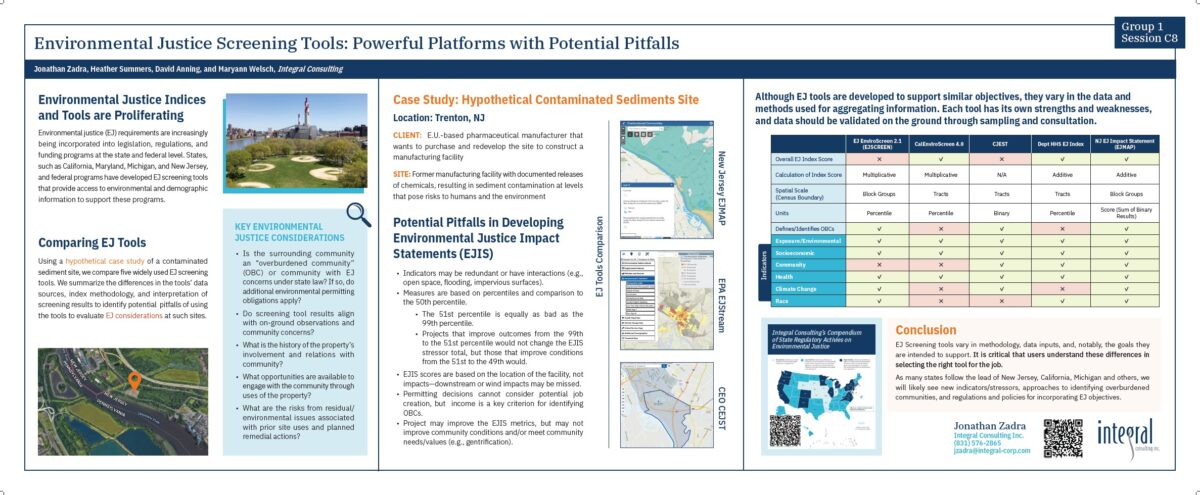Environmental Justice Screening Tools: Powerful Platforms with Potential Pitfalls
By Jonathan Zadra, Ph.D., Consultant
Heather M. Summers, Senior Consultant
Dave Anning, Ph.D., Senior Consulting Economist
Poster presented at Battelle Sediments Conference, Jan 9-12, 2023, Austin, Texas
Background/Objectives
Environmental justice (EJ) requirements are increasingly being incorporated into federal and state legislation, regulations, and funding programs. There are now more than 20 federal and state screening tools available to identify EJ communities and assist regulators and companies in incorporating EJ considerations into regulatory and business processes. At a basic level, all of these EJ tools set out to provide environmental, socioeconomic, and demographic information, and many tools go a step further to calculate an overall EJ index, or score, for the purpose of identifying vulnerable groups that may be most affected by pollution. While all of these tools express similar goals, they vary in the data used and methods for aggregating information, and each has strengths and limitations. It is important to understand these differences when selecting the appropriate tool to use in the context of a project or policy and when interpreting EJ screening results.
Approach/Activities
In this session, we will use a hypothetical case study of a contaminated sediment site to compare some of the most prominent EJ screening tools, such as EJScreen 2.0 and CalEnviroScreen 4.0. We will look at the differences in the data sources, index methodology, and considerations for interpreting the screening results to set forth general guidelines on using these tools when evaluating EJ considerations at contaminated sediment sites.
Results/Lessons Learned
It is critical that practitioners not rely only on EJ screening data and tools, but also understand the history and conditions of a community. For example, improvements in indices over time or between areas may be due to gentrification and substantial social upheaval, which may not be seen as positive by all in a community. As we learn more about how we should proactively incorporate EJ considerations into regulatory and business processes, we must recognize the strengths and limitations of these tools when interpreting screening results and data.




